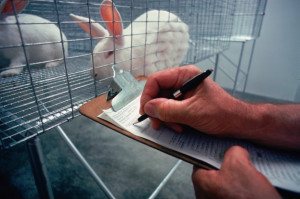 Recent concerns over animal hoarding, introduced species and animal attacks have resulted in a confusing maze of new laws. Many are legitimate attempts to address serious problems, while others seem over-reactions based on poor research. I’m an attorney as well as a biologist, and yet even with this background I find it difficult to keep up with all the changes. However, I’ve found several organizations that track pending legislation and provide links to actions that can be taken…I hope the following helpful information is useful. Read More »
Recent concerns over animal hoarding, introduced species and animal attacks have resulted in a confusing maze of new laws. Many are legitimate attempts to address serious problems, while others seem over-reactions based on poor research. I’m an attorney as well as a biologist, and yet even with this background I find it difficult to keep up with all the changes. However, I’ve found several organizations that track pending legislation and provide links to actions that can be taken…I hope the following helpful information is useful. Read More »
Tag Archives: animal abuse
Feed SubscriptionCruelty-Free Shopping – Finding Products that were not Tested on Animals
Animal enthusiasts often ask if there is any way to be sure that the cosmetics, personal care items and household goods they purchase have not been tested on animals. While many companies make these claims (sales usually rise in response), recent scandals have revealed that abuses abound.
Legal Status
Unfortunately, in the US, legal standards that must be met before the label “no animals were harmed” can be attached to a product do not exist. Frequently, distributors make such claims even though many of the product’s ingredients were tested on animals – after all, they reason, the seller itself did not test the final product on animals! Sad but true.
A group known as the Coalition for Consumer Information on Cosmetics was formed in response to the lack of effective laws and guidelines in this area. Many of the world’s best-known animal welfare organizations, including the 10.5 million-member Humane Society of the USA, are actively involved in its operation.
“Cruelty-Free” Certification
The Coalition for Consumer Information on Cosmetics (CCIC) inspects companies that wish to be certified as “cruelty-free”. In order to qualify, a company must prove that neither it nor any of its ingredient suppliers utilize animals for research. So, for example, if 2 dozen chemicals go into the making of a kitchen cleaner, the suppliers of all 2 dozen chemicals must utilize non-animal testing methods. In addition, all products carried by the company seeking certification must live up to the same standard.
Those passing the CCIC’s rigorous inspection are entitled to display the group’s “Leaping Bunny Logo” (please see photo). This symbol, which is used in the USA, Canada, Great Britain and the European Union, is widely-recognized as evidence that animals are not used in product testing. As of now, it is one of the few ways that a consumer can be absolutely certain of this fact (cosmetics testing on animals is banned in the Netherlands, Belgium and the UK; the European Union is in the process of following suit, but there are legal challenges).
How Consumers can Help
Animal welfare groups are growing in strength and influence, as more and more people become deeply affected by the plight of animals that are injured in the name of better eye creams and such.
The CCIC now provides support to stores that stock “cruelty-free” products. It also supplies information to consumers and sample letters for folks wishing to encourage stores and companies to deal only in products that have not been tested on animals. CCIC has also created an app for Iphone and Android users, where you can look up product information by barcode while shopping. Take the leap, and go cruelty-free, today.
Animal Cruelty and Abuse – Understanding the Law and Reporting Violators
 Despite the many people and groups involved in animal welfare and conservation, the sad fact is that animal abuse and neglect remains a serious problem USA. Unfortunately, the relevant laws are quite confusing and lack uniformity, and it is often difficult which agency is responsible for enforcing them. It is worthwhile, however, to learn as much as you can about how to proceed – most enforcement authorities are poorly staffed, and rely almost exclusively upon citizen complaints for leads.
Despite the many people and groups involved in animal welfare and conservation, the sad fact is that animal abuse and neglect remains a serious problem USA. Unfortunately, the relevant laws are quite confusing and lack uniformity, and it is often difficult which agency is responsible for enforcing them. It is worthwhile, however, to learn as much as you can about how to proceed – most enforcement authorities are poorly staffed, and rely almost exclusively upon citizen complaints for leads.
State and Federal Laws
Animal abuse is a crime in all 50 states, and almost all aspects of the problem are controlled by state law. The only areas covered by a federal law (the Animal Welfare Act) are commercial animal breeding facilities, zoos, circuses and research labs.
Details, such as what constitutes abuse or neglect and how the laws are actually enforced, vary from state to state. In some states, various types of illegal situations (i.e. dog-fighting, neglect in pet stores, abused animals in private residences) are handled by different law-enforcement agencies. Read More »
 That Pet Blog That Pet Place Pet Blog
That Pet Blog That Pet Place Pet Blog

